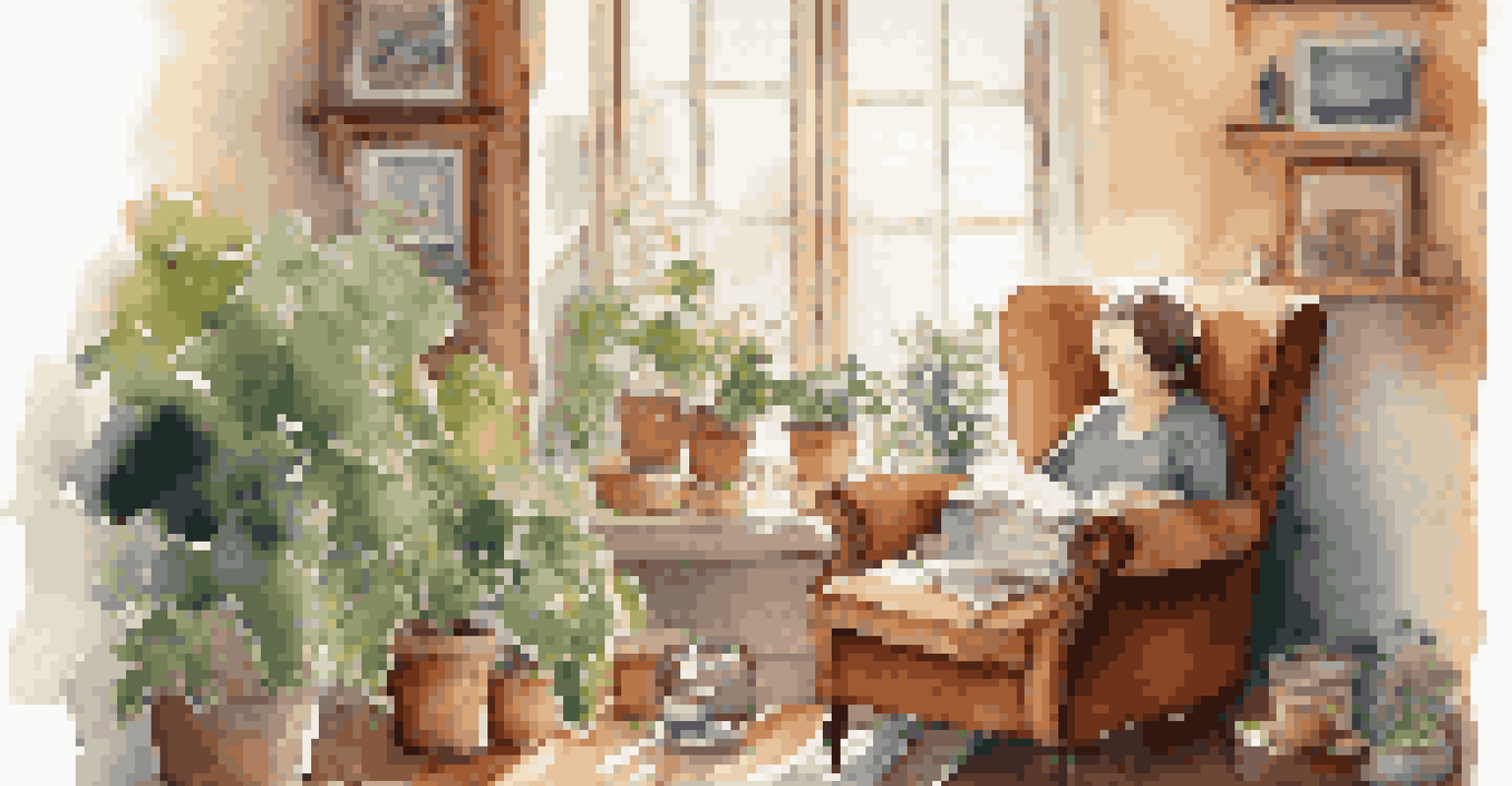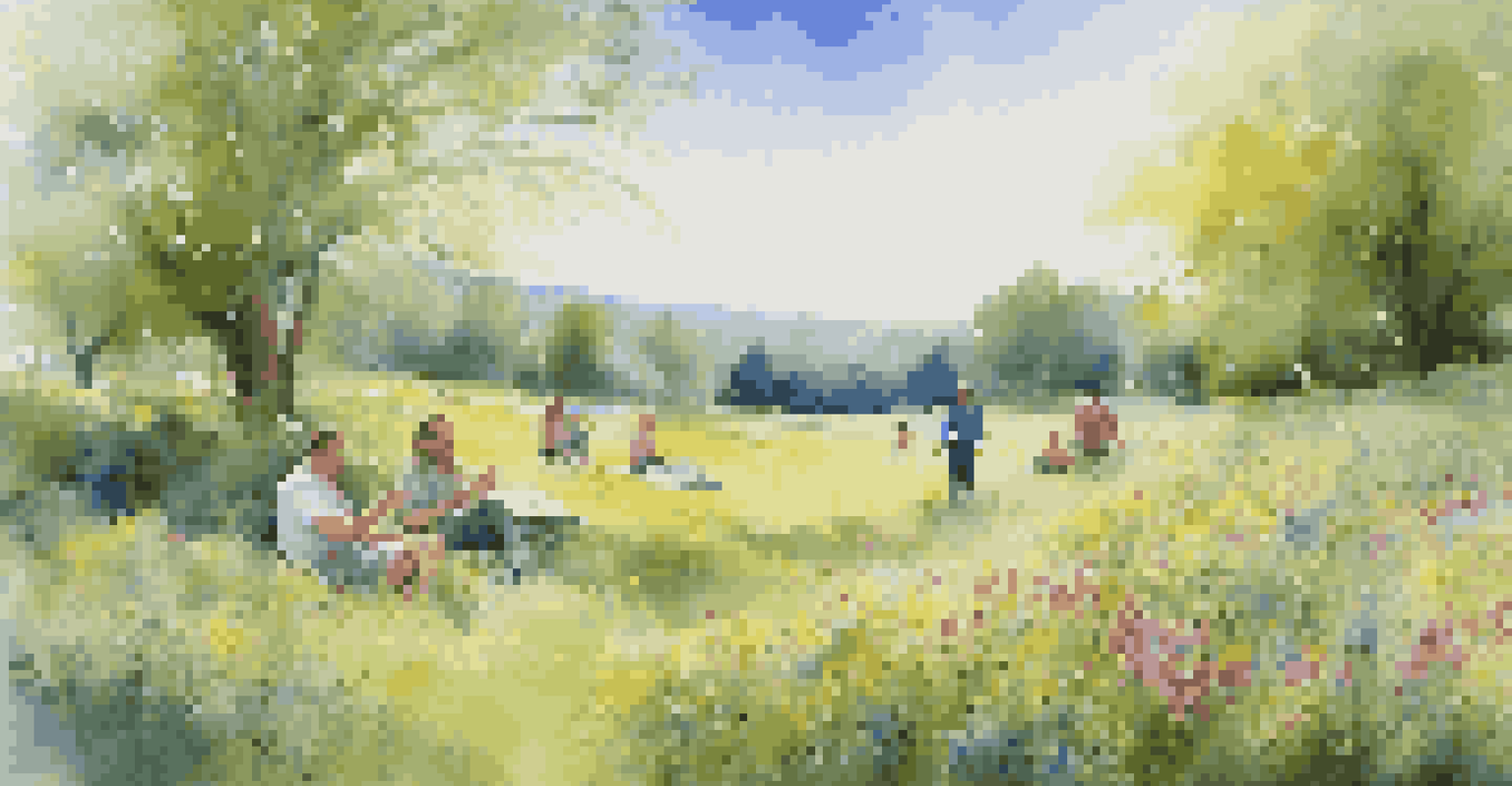The Role of Self-Reflection in Managing Seasonal Affective Disorder

What is Seasonal Affective Disorder (SAD)?
Seasonal Affective Disorder, commonly known as SAD, is a type of depression that occurs at certain times of the year, typically during the fall and winter months when daylight hours are shorter. This condition can lead to feelings of sadness, fatigue, and even changes in sleep and appetite. Understanding SAD is crucial because recognizing its symptoms can help individuals seek the right help and develop coping strategies.
The mind is everything. What you think you become.
People living with SAD often find themselves feeling low energy and withdrawing from social activities, which can create a cycle of isolation and increased symptoms. It's more than just the winter blues; it’s a serious condition that can impact daily life if left unaddressed. By raising awareness about SAD, we can foster empathy and support for those affected.
While light therapy and medication can be effective treatments, self-reflection offers an additional layer of support. Taking time to reflect on one’s feelings and experiences during the darker months can uncover patterns and triggers, making it easier to manage symptoms and cultivate a sense of agency.
The Importance of Self-Reflection
Self-reflection is the practice of examining our thoughts, feelings, and behaviors to gain insight into our emotional well-being. This process is especially important for individuals dealing with SAD, as it allows them to identify the specific factors that contribute to their feelings of sadness. By understanding these triggers, individuals can take proactive steps to mitigate their impact.

Reflecting on personal experiences can also help individuals recognize moments of joy, even during challenging times. For example, journaling about positive interactions or activities can create a more balanced perspective, highlighting that not every moment is overshadowed by sadness. This realization can foster resilience and hope.
Understanding Seasonal Affective Disorder
SAD is a serious type of depression that occurs during the fall and winter months, impacting energy levels and social interactions.
Moreover, self-reflection encourages mindfulness, which is the practice of being present in the moment. Mindfulness can be incredibly beneficial for those with SAD, as it helps to reduce anxiety and promote emotional regulation. This aligns with the idea that by knowing ourselves better, we can navigate our emotions more effectively.
Methods of Self-Reflection
There are various methods to engage in self-reflection, and finding the right one can make a significant difference. Journaling is one popular technique; it allows individuals to express their feelings on paper, providing clarity and a deeper understanding of their emotions. Writing can also serve as a therapeutic outlet, helping to release pent-up feelings and thoughts.
In the middle of difficulty lies opportunity.
Meditation and mindfulness practices are other effective ways to foster self-reflection. These techniques encourage individuals to sit quietly and observe their thoughts without judgment, creating a space where they can understand their emotional responses. Apps and guided sessions can be particularly helpful for beginners looking to incorporate mindfulness into their routine.
Additionally, discussing feelings with a trusted friend or therapist can provide valuable insights. Sometimes, talking through emotions can reveal patterns we might not notice on our own. This external perspective can be instrumental in recognizing the impacts of SAD and brainstorming effective coping strategies.
Setting Goals for Positive Change
Self-reflection can also pave the way for setting meaningful, achievable goals. When individuals take stock of their feelings and experiences, they can identify areas in their lives that may need change or improvement. For instance, someone might realize they need to engage more in social activities or seek out sunlight during the day.
By setting specific goals related to their mental health, individuals can create a roadmap for personal growth. These goals might include scheduling regular outdoor walks, joining a community group, or practicing gratitude daily. Having clear objectives provides motivation and accountability, making it easier to stay on track.
Self-Reflection Aids Coping
Engaging in self-reflection helps individuals recognize emotional triggers and fosters resilience, improving their ability to manage SAD.
Achieving small goals can boost confidence and create a sense of accomplishment, counteracting some of the lethargy that comes with SAD. Over time, these positive changes can lead to a more fulfilling and joyful life, even during the darker months of the year.
Building a Support System
A strong support system can make a world of difference in managing Seasonal Affective Disorder. Friends, family, or support groups can provide encouragement and understanding, reminding individuals that they are not alone in their struggles. Engaging with others who experience similar feelings can create a sense of belonging and shared experience.
Self-reflection can help individuals communicate their needs to those around them. By understanding what support looks like for them—be it someone to talk to or simply a buddy to go for walks with—they can articulate these needs more clearly. This proactive approach can foster deeper connections and enhance the support received.
Moreover, participating in community activities or online forums can expand one’s support network. These interactions not only provide emotional support but also present opportunities to learn from others’ experiences with SAD, offering fresh perspectives and coping strategies.
Embracing Seasonal Changes
Embracing the changes that each season brings can be a powerful aspect of self-reflection. Instead of dreading the arrival of winter, individuals can view it as a time for rest, reflection, and renewal. This mindset shift can transform how one approaches the season, making it less daunting and more manageable.
Self-reflection can help individuals appreciate the unique beauty of each season. For instance, winter can offer quiet moments for introspection, while spring brings the promise of new beginnings. Recognizing the positives in seasonal shifts can foster a greater sense of gratitude and appreciation for life’s cycles.
Building Support for SAD
A strong support system, paired with proactive communication of needs, enhances emotional well-being for those dealing with SAD.
Engaging in seasonal activities, such as winter sports or holiday traditions, can also create joyful experiences that counterbalance the feelings of sadness. By reflecting on personal preferences and interests, individuals can find ways to make the most of each season, ensuring they remain engaged and connected to their surroundings.
Conclusion: The Path to Managing SAD
In conclusion, self-reflection serves as a vital tool in managing Seasonal Affective Disorder. By taking the time to understand one’s emotions, setting goals, and building a support system, individuals can create a more resilient foundation for themselves. This journey of self-discovery not only aids in coping with SAD but also promotes overall mental health and well-being.
As the seasons change, so too can our perspectives. Embracing self-reflection allows us to navigate the ups and downs of life with greater ease and understanding. It’s important to remember that seeking help, whether through therapy or community, is also a sign of strength.

Ultimately, managing SAD is about finding balance and cultivating a deeper relationship with oneself. Through self-reflection, individuals can uncover the tools they need to thrive, even during the darker months, leading to a more fulfilling life year-round.